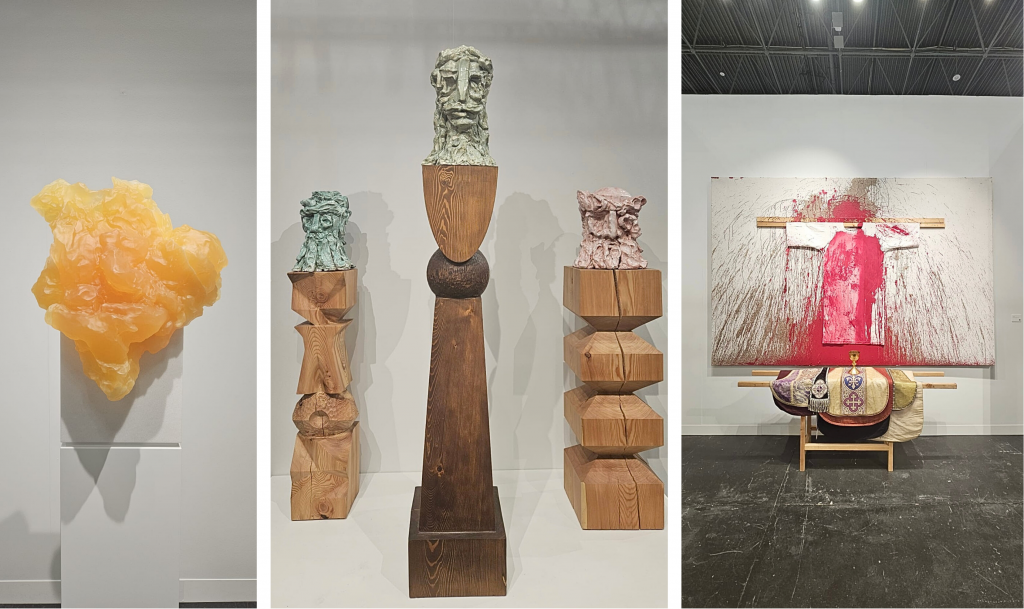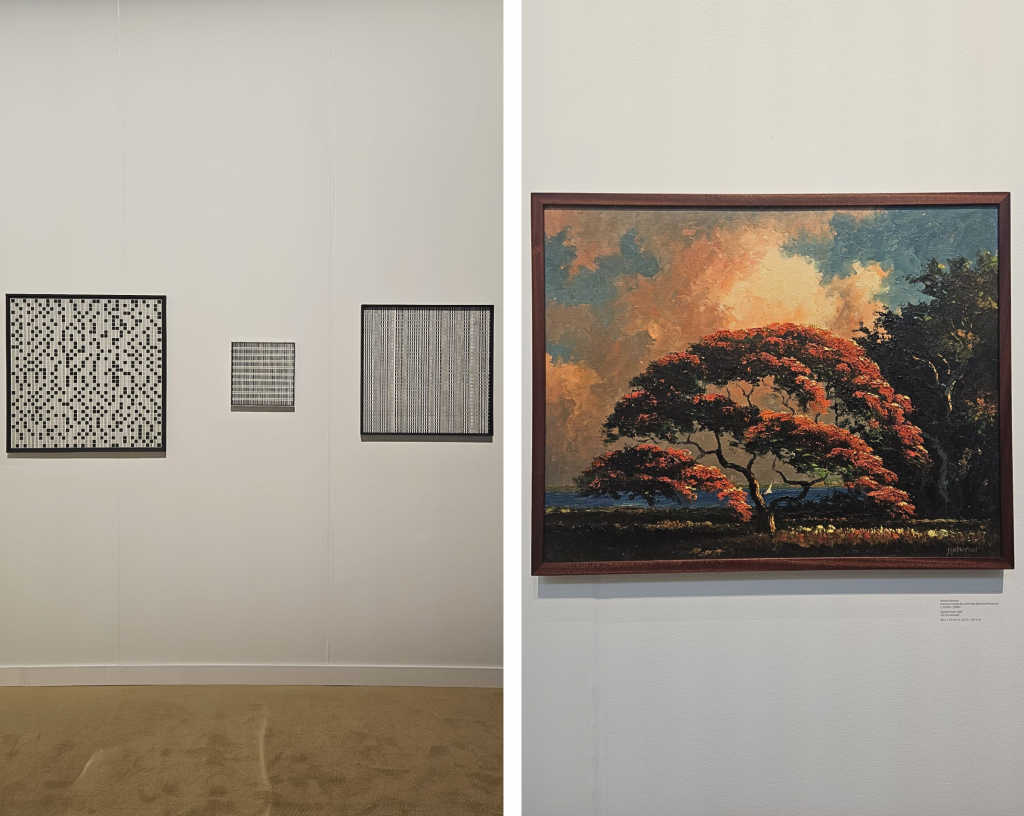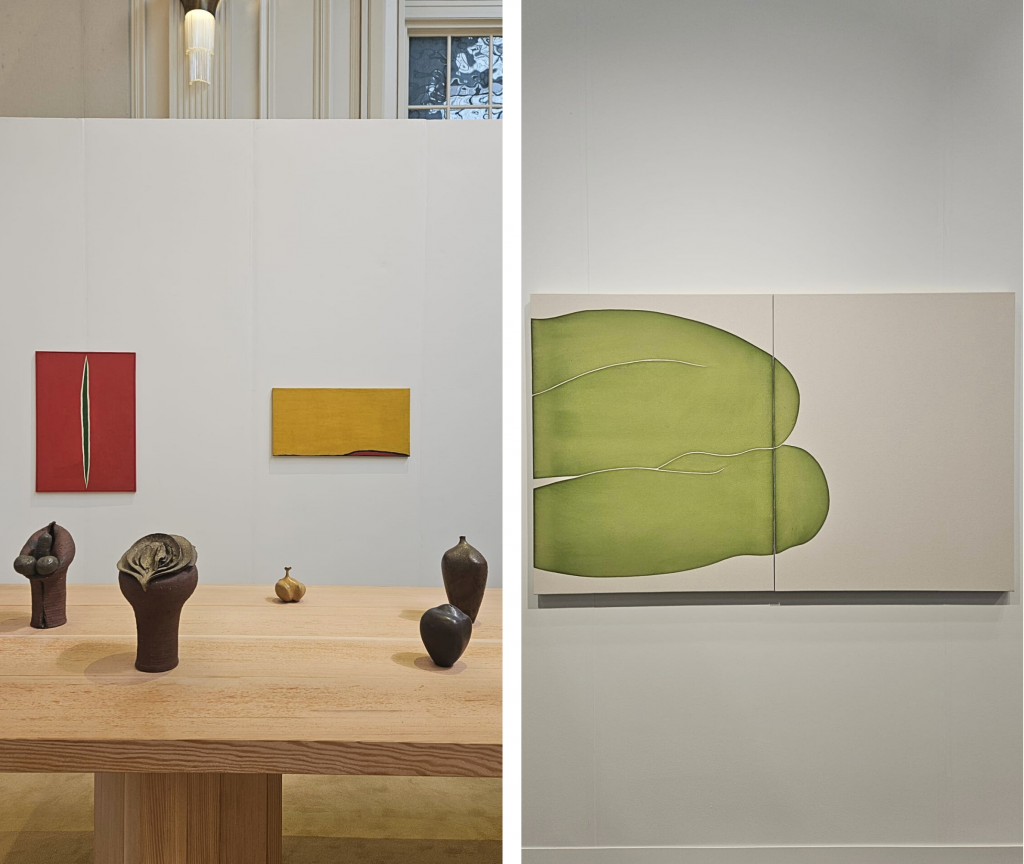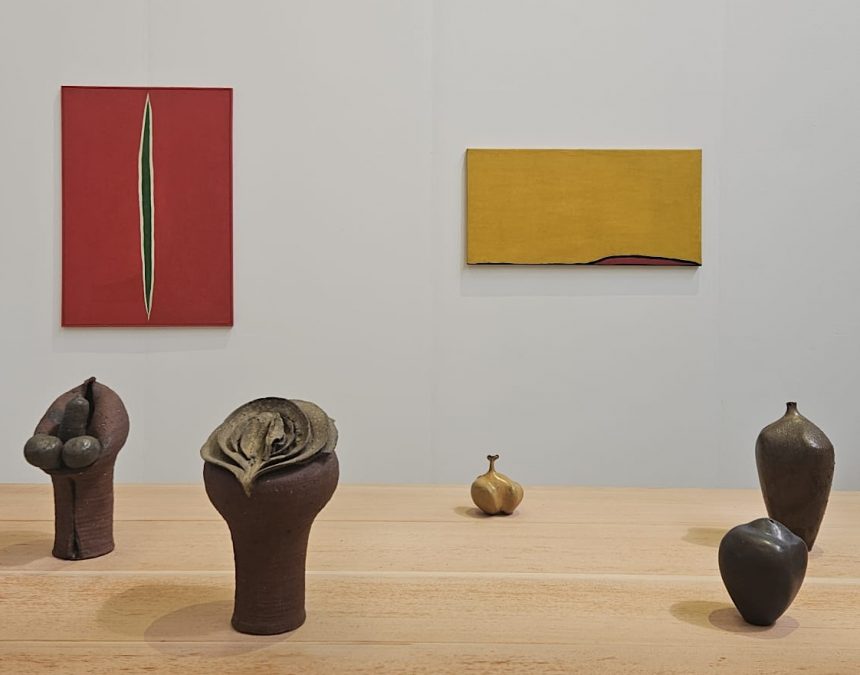New York: Independent and Armory 2025 Highlights
Marking the start of New York’s autumn season, The Armory Show and Independent once again positioned the city at the centre of the international art calendar. Artvisor highlights both canonical 20th-century figures with bold contemporary practices.
The Armory Show Highlights
Held at the Javits Center, the show featured a broad spectrum of galleries from around the world, alongside curated sections and public programming that reflected New York’s lasting importance as an international centre for contemporary art. Named in homage to the legendary 1913 Armory Show, which first introduced European modernism to an American audience—the fair has grown into one of the city’s most significant cultural events.
Echoing this spirit, Secci Gallery presented Barry X Ball’s Baby at the Breast (2013–2019), a reinterpretation of Medardo Rosso’s Enfant au Sein (1890), rendered in translucent golden honeycomb calcite, alongside Kevin Francis Gray’s porcelain busts from his Fragile Heads (2025) series. Each engages historical sculptural traditions as a point of departure, transforming them into contemporary meditations on fragility, tension, and striking material presence.
Schüttbild (2009) by Hermann Nitsch drew attention at Marc Straus Gallery. Created with priest robes, a chalice, and affixed textiles, the work exemplified the Vienna Actionist’s ritualistic practice of the Orgien Mysterien Theater, in which Christian and pagan symbolism converged with the legacy of Abstract Expressionism.

Dep Art Gallery traced Salvo’s evolution from the 1970s onwards. Rare and significant works placed the artist’s oeuvre in dialogue with Alighiero Boetti, Valerio Adami, Natale Addamiano, and Tino Stefanoni, which emphasised increased interest in his conceptual and meditative nocturnes in today’s market.
Buchmann Galerie presented a delicate beeswax sculpture by Wolfgang Laib from his Tower of Silence (2019) series. Echoing Mesopotamian ziggurats and Christian reliquaries, these forms described by Donald Kuspit as embodying “the inner solitude necessary for higher consciousness”—testified to Laib’s ritualistic process and meditative exploration of permanence and transience.
Hugo Wilson’s large-scale works were shown with Galerie Judin, extending his explorations of figuration and abstraction in expressive monoprints and pastel.

Galleria Studio G7, Bologna, presented works by Giulio Paolini, a leading figure of Arte Povera. Since the late 1960s, Paolini has consistently engaged with themes of quotation, repetition, and the act of exhibiting itself. His pieces often incorporating fragments of classical statuary, reproductions, or geometric frameworks foreground the condition of viewing and the relationship between artist, artwork, and spectator.

Independent 2025 Highlights
Staged this year at Cipriani South Street, the fourth edition of Independent adhered to its distinctive tightly curated model that placed emphasis on rediscoveries and overlooked narratives.
Lucia di Luciano, a pioneer of Italian programmed and analytical painting, became a focus of the booth by Lovay Fine Arts. Since the 1960s, di Luciano has pursued a systematic approach to abstraction, producing compositions based on permutations of line, colour, and geometric structure. Her presence at Independent offered collectors and scholars an opportunity to reassess her contribution within the Italian post-war experimentalism and wider narratives of European avant-garde practice.
Jeremy Scholar debuted a group presentation that brought together the celebrated Florida Highwaymen alongside Canadian painter Gordon Rayner, with the support of Mitchell Algus Gallery. Rayner, a central figure in Canadian painting of the late 20th century, is best known for his gestural canvases that merge abstraction with an interest in landscape and the natural environment.

Another major highlight was the presentation of three pioneering Lebanese artists, Huguette Caland, Afaf Zurayk, and Dorothy Salhab Kazemi. These practices articulated a layered history of modernism in the Middle East, shaped equally by political upheaval and deeply personal expressions of sensuality, memory, and resilience.

